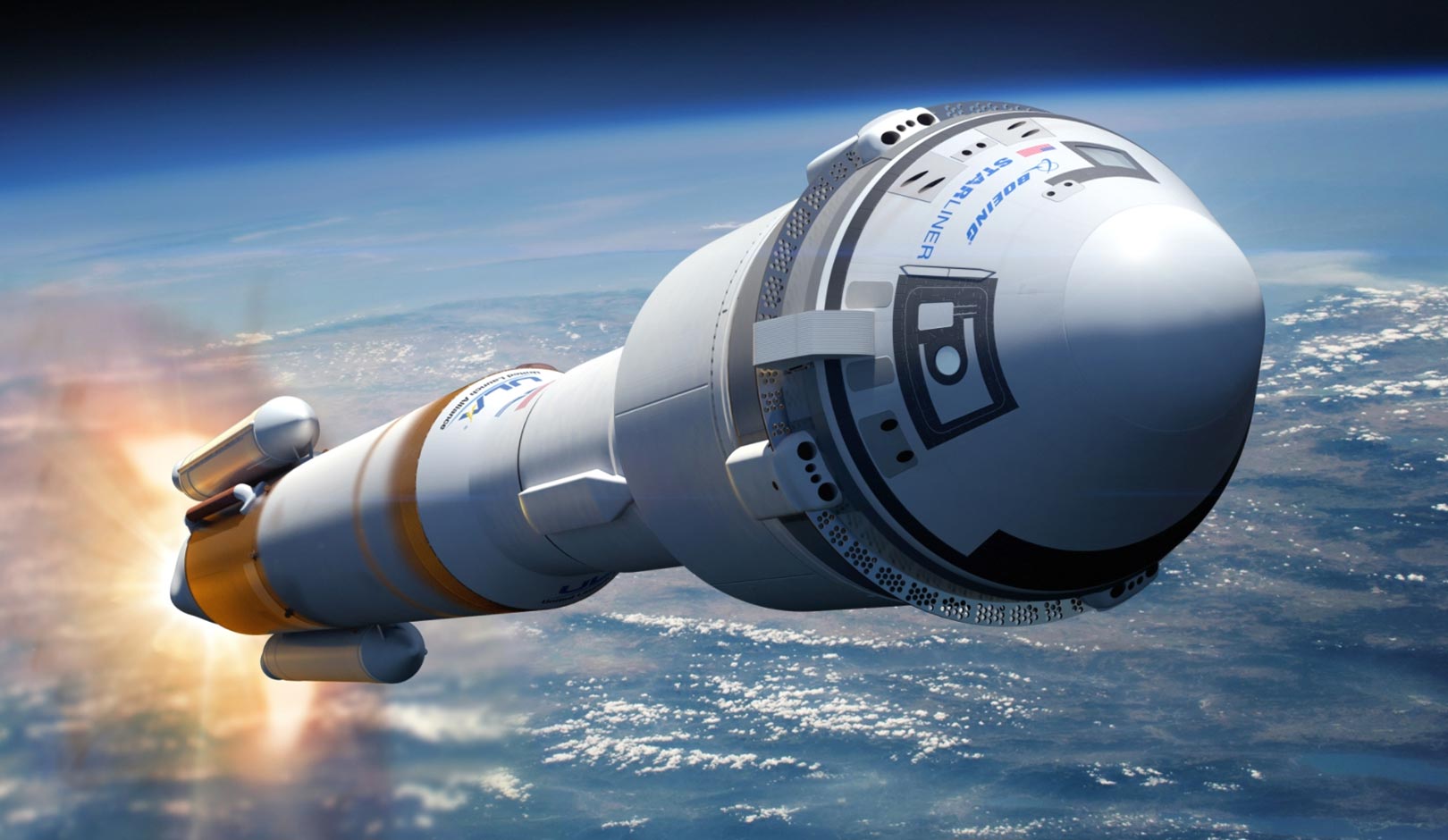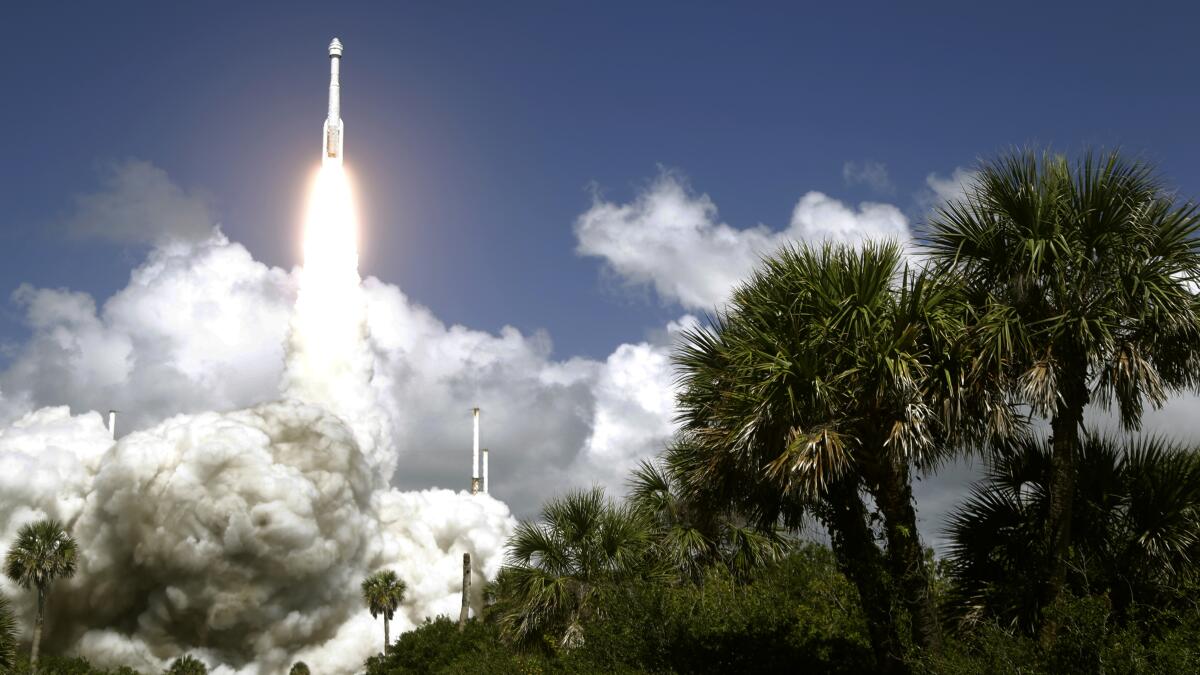NASA’s Boeing Starliner Launch: Mission Overview

Nasa, boeing starliner launch – NASA’s Boeing Starliner launch is a significant milestone in the history of space exploration. Scheduled for liftoff in 2023, the mission aims to test the spacecraft’s capabilities and demonstrate its readiness for crewed flights to the International Space Station (ISS). The Starliner is designed to carry up to four astronauts and has been equipped with advanced systems for autonomous docking and navigation.
NASA’s Boeing Starliner launch, scheduled for later today, has garnered significant attention. For those unable to witness the historic event in person, nasa live launch will provide real-time updates and coverage. Stay tuned to witness the culmination of years of hard work and technological advancements as the Starliner embarks on its mission to the International Space Station.
Spacecraft Design and Capabilities
The Starliner spacecraft is a reusable, cone-shaped vehicle with a diameter of 4.6 meters and a height of 5.6 meters. It is powered by a United Launch Alliance Atlas V rocket and features a service module that provides propulsion, power, and environmental control. The Starliner’s crew module is equipped with a large touchscreen interface, comfortable seating, and a panoramic window offering stunning views of Earth and space.
The highly anticipated NASA and Boeing Starliner launch has captured the attention of space enthusiasts worldwide. However, if you’re curious about the release date of the upcoming Star Wars series “The Acolyte,” you can find that information here. Nevertheless, the Starliner launch remains a significant milestone in space exploration, marking the first crewed flight of Boeing’s spacecraft to the International Space Station.
Scientific and Technological Advancements
The Starliner mission will demonstrate several key technological advancements, including an autonomous docking system that will allow the spacecraft to rendezvous and dock with the ISS without human intervention. The spacecraft is also equipped with a variety of sensors and instruments that will collect valuable scientific data on the space environment and the effects of space travel on the human body.
Technical Aspects of the Launch
The Boeing Starliner spacecraft is a reusable spacecraft designed to transport crew and cargo to and from low Earth orbit. It is equipped with advanced propulsion systems, guidance systems, and communication capabilities to ensure a safe and successful launch and mission.
Propulsion Systems
- The Starliner spacecraft is powered by a single Atlas V rocket, provided by the United Launch Alliance. The Atlas V is a two-stage rocket that uses liquid oxygen and kerosene propellants.
- The first stage of the Atlas V rocket provides the initial thrust to lift the spacecraft off the launch pad. The second stage then ignites to continue the ascent into orbit.
Guidance Systems
The Starliner spacecraft is equipped with a state-of-the-art guidance system that controls its flight path and ensures accurate orbit insertion. The system uses a combination of inertial navigation, GPS, and star trackers to determine the spacecraft’s position and orientation.
Communication Capabilities
The Starliner spacecraft is equipped with a robust communication system that allows it to transmit data and receive commands from ground control. The system includes multiple antennas and transponders to ensure reliable communication throughout the mission.
Launch Sequence
The launch sequence of the Boeing Starliner spacecraft is a complex and carefully orchestrated process that involves several key stages:
- Liftoff: The Atlas V rocket ignites and lifts off the launch pad, providing the initial thrust to propel the spacecraft into the sky.
- First Stage Separation: Once the first stage of the Atlas V rocket has burned out, it separates from the spacecraft and falls back to Earth.
- Second Stage Ignition: The second stage of the Atlas V rocket ignites and continues to propel the spacecraft towards orbit.
- Fairing Separation: The protective fairing that covers the spacecraft during launch is jettisoned once the spacecraft reaches a certain altitude.
- Orbit Insertion: The second stage of the Atlas V rocket burns out and separates from the spacecraft, which then enters orbit around Earth.
Ground Control Systems
The Boeing Starliner spacecraft is monitored and operated by a team of engineers and mission controllers at NASA’s Mission Control Center in Houston, Texas. The ground control systems include a variety of computers, displays, and communication equipment that allow the team to track the spacecraft’s progress, send commands, and respond to any emergencies.
Collaboration and Partnerships: Nasa, Boeing Starliner Launch

The development and launch of the Starliner involved extensive collaboration between NASA and Boeing, with each party bringing its unique expertise and resources to the project. NASA provided funding, technical expertise, and oversight, while Boeing was responsible for designing, building, and testing the Starliner spacecraft and launch vehicle.
In addition to NASA and Boeing, several other organizations and agencies played important roles in the Starliner mission. SpaceX provided the Falcon 9 rocket that launched the Starliner, while the United Launch Alliance provided the Atlas V rocket that launched the Starliner’s service module. International partners, including the European Space Agency (ESA) and the Japan Aerospace Exploration Agency (JAXA), also contributed to the mission by providing ground support and technical expertise.
International Partnerships, Nasa, boeing starliner launch
The Starliner mission benefited from the contributions of several international partners, including the European Space Agency (ESA) and the Japan Aerospace Exploration Agency (JAXA). ESA provided ground support for the launch and landing of the Starliner, while JAXA provided technical expertise in the development of the Starliner’s docking system.
With NASA’s recent launch of the Boeing Starliner, we are reminded of the importance of innovation in space exploration. This mission marks a significant milestone in our journey to reach the stars, and it has captured the attention of the world.
As we look to the future of space travel, we must not forget the pioneers who came before us. The Acolyte Time is a fascinating exploration of the early days of space exploration and the challenges faced by those who dared to dream of reaching the heavens.
By learning from the past, we can ensure that the future of space exploration is bright and filled with possibility.
The recent launch of NASA’s Boeing Starliner spacecraft marks a significant milestone in the exploration of space. The spacecraft is designed to carry astronauts and cargo to the International Space Station , which serves as a vital hub for scientific research and collaboration among nations.
The successful launch of the Starliner paves the way for future missions to the ISS, enabling us to expand our understanding of the cosmos and push the boundaries of human exploration.
NASA’s Boeing Starliner launch is a significant milestone in space exploration. The starliner launch is designed to test the spacecraft’s ability to dock with the International Space Station, paving the way for future human spaceflight missions. The launch represents years of hard work and dedication from the NASA and Boeing teams, and marks a new chapter in the history of space exploration.